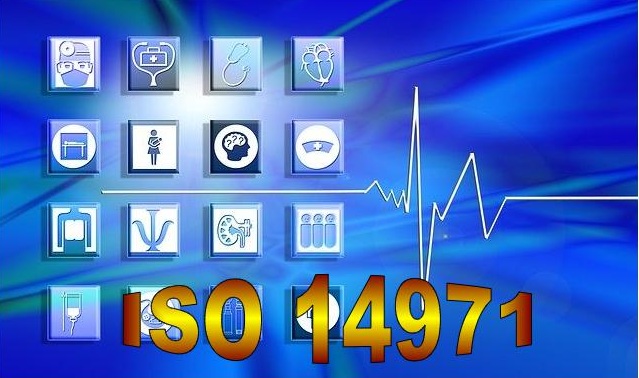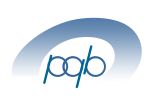T 64v19D - Free demo course E-Learning - ISO 14971 Risk management of medical devices version 2019
Free demo E-Learning (online course) - Risk management of medical devices ISO 14971 version 2019
|
||||

|
|
|||
|
See the online course T 22v16 ISO 13485 Readiness See the online course T 42v16 Internal audit ISO 13485 See the online training package T 82v16 ISO 13485 |
||||
| Result of the training satisfaction survey : | 82.9% | Last update on January 17, 2025 |
Description of the online course risk management of medical devices ISO 14971 version 2019
Discover the ISO 14971 standard and
- its contents
- its principles
- its requirements
- its stakes
Get used to
- process approach
- medical device terminology
- risk MD requirements
- MD readiness documents
- MD internal audit documents
- risk-based thinking
- improvement
- feedback
The important and fundamental elements of arisk management of medical devices training
- risk
- standards and specifications
- process approach (definitions, process types, mapping)
- general risk requirements
- risk analysis
- risk evaluation
- risk control
- overall residual risk
- risk management review
- production and post-production activities
The menu of the course
- Presentation
- MCT (multiple-choice test) Beginning (10 questions)
- 1 Risk
- 1.1 History
- 1.2 Scope
- 1.3 Benefits
- 2 Definitions, standards and books
- 3 Process approach
- 3.1 Definitions
- 3.2 Processes
- 3.2.1 Management process
- 3.2.2 Realization process
- 3.2.3 Support process
- 3.3 Process mapping
- 3.4 Process approach
- 4 General requirements
- 4.1 Risk management
- 4.2 Responsibilities
- 4.3 Competences
- 4.4 Risk management plan
- 4.5 Risk management file
- Summary of clause 4
- MCT General requirements (9 questions)
- 5 Risk analysis
- 5.1 Risk analysis
- 5.2 Use
- 5.3 Characteristics
- 5.4 Hazards
- 5.5 Estimation
- Summary of clause 5
- MCT Risk analysis (6 questions)
- 6 Risk evaluation
- Case New risk
- Case Risk treatment
- Case Risk register
- Summary of clause 6
- 7 Risk control
- 7.1 Options
- 7.2 Control measures
- 7.3 Residual risks
- 7.4 Benefit-risk
- 7.5 Risks from risk control
- 7.6 Completeness of control
- Case Kaizen & problem
- Case Control measure
- Case Acceptability criteria
- Summary of clause 7
- MCT Risk evaluation and control (6 questions)
- 8 Overall residual risk
- Summary of clause 8
- 9 Risk management review
- Case Design review
- Summary of clause 9
- MCT Management review (6 questions)
- 10 Production and post-production
- 10.1 General
- 10.2 Collection
- 10.3 Review
- 10.4 Actions
- Case Nonconformities
- Summary of clause 10
- MCT Production and post-production (6 questions)
- MCT End (20 questions)
Read more about the online course ISO 14971 version 2019
Risk control of medical devices (ISO 14971) to be able to:
- reduce risks
- obtain benefits greater than risks
- manage risks throughout the life cycle of the medical device
Expected benefits of risk management of MDs:
- identification of hazards and their severity
- improved stakeholder confidence
- improvement of the overall performance of the company
- improvement of the company’s reputation
- detection of potential future problems
- improved appreciation of opportunities and threats
- increased opportunities to achieve goals
- easier obtaining of the CE marking of a medical device (MD)
- creation of value for the company
- recalls avoided
- establishment of an adequate framework for the implementation in a controlled manner of any activity
- establishment of a reliable basis for decision-making
- identification of gaps
- obtaining a competitive advantage
- optimization of resource use
- protection of company assets
- effective response to changes
- reduction of costs and deadlines
- reduction of operational surprises
- scrupulous compliance with legal requirements
- increased visibility of the responsibilities of each staff member
Notions of ISO 13485 and ISO 14971
Any person involved in risk management of medical devices:
- director
- risk manager
- quality director
- quality manager
- metrology manager
- safety manager
- maintenance manager
- project leader
- risk assistant
- quality correspondent
- quality technician
- quality assistant
- quality operator
- internal auditor
- student
21 hours online on average (according to knowledge and aptitudes, this duration can vary individually). One hour of online training is equivalent to at least 2 hours of training on the spot.
At the end of the module, you will be able to:
- interpret the requirements of the ISO 14971 standard
- take part in the development of the risk policy
- perform risk analysis
- carry our risk evaluation
- realize risk control
- conduct risk management review
- take part in the implementation of the document system
- evaluate the ISO 14971 certification project
Methods and tools
- dedicated Internet site
- specific online training module
- Open and Distance Learning (ODL)
- your training history:
- the time you have passed on each clause and sub-clause of the module
- the record of the score of all your trials of the MCTs (multiple-choice tests)
- level test at beginning of the training
- MCTs with comments, notes on a 20 point scale and recommendations
- videos
- true stories
- good practices
- bad practices
- case studies
- jokes
- games
- online tutorial :
- a follow up of acquired material and the progress of each trainee
- online or by e-mail within 24 hours
- personalized answers to questions
- advice and recommendations about documents, books and useful links
- delivered certificate of attendance and mastery at the end of the training (example)
Access to the course is 60 days from the date of validation of your order. This period will be renewed for free upon a simple request within 6 months
The requirements of the ISO 14971 standard version 2019 are
See also the ISO 13485 requierments version 2016:
Test your knowledge of the requirements of ISO 14971 version 2019 in relation to the clauses and sub-clauses of the standard by answering the questions of the:
How to work with medical device risk management 7' 26"
What is ISO 13485 for medical devices? 8' 27"
Documentation for a medical device product development process (Part 1) 11' 25"
Short course on the Medical Device Regulation (EU) 2017/745 14' 54"
How to estimate risk for a medical device according to ISO 14971:2019 15' 21"
Design Control for Medical Devices - Online introductory course 17' 30"
Evolution of ISO 13485:2016 and ISO 9001:2015 standards 22' 12"
ISO 13485:2016 VIDEO PRESENTATION 23' 24"
How to Simplify Your Compliance with the New ISO 13485:2016 1h 45' 23"
ISO 13485: 2016 Part 1: Getting Ready for Changes 15' 39"
Risk management for medical devices and ISO 14971 - Online introductory course 17' 06"
ISO 13485: 2016 Part 2: Getting Ready for Changes 36' 50"
ISO 13485:2016 Part 3: Getting Ready for Changes 21' 25"
A Risk-Based Approach to QMS Ahead of ISO 13485 Changes 1h 29' 10"
Here is a MCT (Multiple-choice test) to evaluate, before beginning, the level of your knowledge for this course. (One or more correct answers are possible). You can start again as many times you wish.
 1. The quantitative risk assessment appeared over the years:
1. The quantitative risk assessment appeared over the years:
 2. The requirements of ISO 14971 version 2019 are:
2. The requirements of ISO 14971 version 2019 are:
 3. The risk analysis takes into account:
3. The risk analysis takes into account:
 4. The characteristics of a MD, relating to safety, concern:
4. The characteristics of a MD, relating to safety, concern:
 5. Following the risk evaluation we can:
5. Following the risk evaluation we can:
 6. Risk reduction is confirmed by:
6. Risk reduction is confirmed by:
 7. During the design of the medical device, the manufacturer:
7. During the design of the medical device, the manufacturer:
 8. The evaluation of the overall residual risk takes into account, among other things:
8. The evaluation of the overall residual risk takes into account, among other things:
 9. To evaluate the risks related to the saety of the medical device after the start of marketing:
9. To evaluate the risks related to the saety of the medical device after the start of marketing:
 10. The purpose of reviewing the information collected is to determine whether:
10. The purpose of reviewing the information collected is to determine whether:


.png)

